Historical facts about The Church and Catholicism/ quotes from the Bible, saints, and great Christian writers/ excerpts from the Catechism
Don't wanna be here? Send us removal request.
Text
I would be most appreciative if you would pray for my niece K, she is very troubled.
90 notes
·
View notes
Text
John 6:51-54, Literal or Symbolic?
51 I am the living bread that came down from heaven. Whoever eats ( φάγῃ ) this bread will live forever; and the bread that I will give is my flesh, for the life of the world.”
52 Then the Jews started to argue among themselves, saying, “How can this man give us his flesh to eat ( φαγεῖν )?” 53 Jesus said to them, “Amen, amen, I say to you, unless you eat ( φάγητε ) the flesh of the Son of Man and drink his blood, you do not have life within you. 54 Whoever feeds ( τρώγων ) upon my flesh and drinks my blood has eternal life, and I will raise him up on the last day.
The original Greek words used in verses 51-53 are φάγῃ / φάγητε / φαγεῖν, they are forms of the Greek verb phago, meaning “eating.”
However, after the Jews begin to express incredulity at the idea of eating Christ’s flesh, the language begins to intensify. In verse 54, John begins to use τρώγων, trogo instead of phago. Trogo is a decidedly more graphic term, meaning “to chew on” or to “gnaw on”—as when an animal is ripping apart its prey.
Why does John use such strong and deliberate language if he isn’t attempting to emphasize the literal nature of Christ’s words? Especially as Jesus is clearly responding emphatically to the wonder and doubt of the Jews.
38 notes
·
View notes
Text

[G. K. Chesterton quote: "Pornography is not a thing to be argued about with one's intellect, but to be stamped on with one's heel."]
427 notes
·
View notes
Text

[Image description: artwork of St. Martin de Porres with quote "everything, even sweeping, scraping vegetables, weeding a garden and waiting on the sick could be a prayer if it were offered to God."]
76 notes
·
View notes
Text
God's children are not for sale
#Not my usual topic but important#Go see 'sound of freedom' if you can#Excellent film#pro life#Anti trafficking
233 notes
·
View notes
Text
A brief comparison of the liturgical prayers of the TLM (traditional Latin Mass) and the Novus Ordo.
Most practicing Catholics know that major revisions were made to Roman Catholic Mass in 1969, but aside from the language of the liturgy, what has changed?
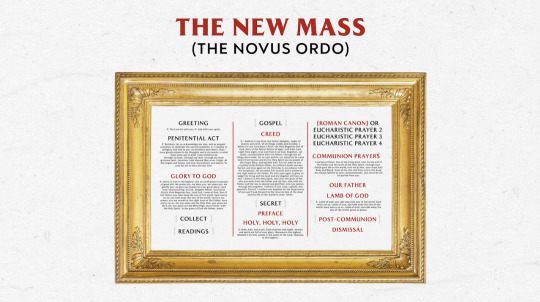
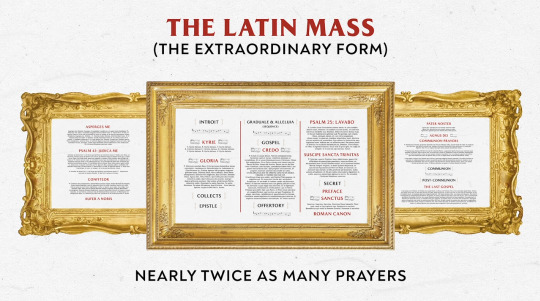
The Latin Mass has nearly twice as many prayers as the New Mass.
Orations
Of all the rotating prayers (orations) 83% are unique to the TLM. In the new missal, 669 of the original 1,273 orations have been removed, and of the remaining, only 13% were left unchanged.

Reverence
Even the number of times the priest kisses the altar, genuflects, and makes the sign of the cross, has been severely reduced
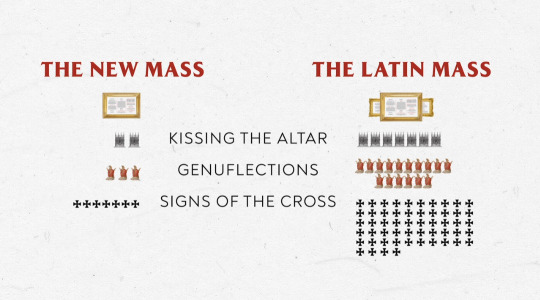
A Different Cycle of Scripture Readings
The new Roman missal has a three year cycle - a well intentioned attempt to expose the laity to more scripture in the Mass. However given the nature of the three year cycle, it's inevitable that the readings will not align as appropriately and succinctly as the specially chosen readings of the older one year cycle when it comes to specific feasts and the liturgical seasons, a choice of quantity over quality unfortunately.
I leave it to the reader to decide for his or herself whether the older one year or newer three year cycle is preferable.

The Last Gospel
Catholics who have never attended a Latin Mass may be surprised to learn that following communion and dismissal, there is a lengthy gospel reading called The Last Gospel (John 1:1-14).
Why the last Gospel?
From the notations of the 1962 Roman Daily Missal:
The Mass began with the longing cry of the Old Testament: "Send forth Thy light and Thy truth!" It could not be concluded in a more worthy and more sublime manner than with the words of St. John: "The Word was made flesh, and dwelt among us; and we saw His glory as of the Only-Begotten of the Father, full of grace and truth."
And according to Catholic author Msgr. George J. Moorman, in his book, The Latin Mass Explained:
This reading, in the course of time, was added to the Eucharistic service on account of the great reverence the early Christians entertained for this portion of the Gospel and because it contains a summary of the benefits of which we are made partakers through Christ’s Sacrifice. The service was introduced by the prayer of the priest: ‘Send forth Thy Light and Thy Truth!’ It could not be concluded in a more becoming manner than with the words, ‘AND THE WORD WAS MADE FLESH, and dwelt among us; and we saw His glory, the glory as of the Only-begotten of the Father, full of grace and truth.’ At the words ‘AND THE WORD WAS MADE FLESH’, the priest and the people kneel on one knee in token of adoration of the mystery of the Incarnation, which is expressed in these words, and to indicate that the Son of God came from Heaven to earth. When the priest has finished the reading of this Gospel, the server answers, ‘Deo Gratias’—‘Thanks Be To God.’ These are the last words of the Mass.
Unfortunately this beautiful gospel passage and it's place of honor have been completely removed in the New Mass, and it's omission may even (as a matter of personal opinion) have contributed to the enormous number of people who leave Mass early immediately following Holy Communion.
Conclusion
Dearest Reader, I have attempted to be objective and only present facts in the above, however it may be clear to those of you who are familiar with my blog, where my biases lay. I am a Latin Mass Catholic, I love the traditional liturgy and will never stop advocating for the timeless Mass of ages that has brought untold numbers of faithful to the Lord for over a millennia. However, I make no judgment on the faithful who prefer the New Mass, nor do I mean to suggest that the Novus Ordo is in any way invalid. I only ask that all consider the information I have compiled and do your own research, that you may come to your own well informed conclusions. God Love You!
If any have questions or further interest in the topic of the Traditional Latin Mass my DMs are open or you may send an 'ask', I will answer or redirect you to the best of my ability.
(Credit to The Mass of the Ages project for images above)
123 notes
·
View notes
Text
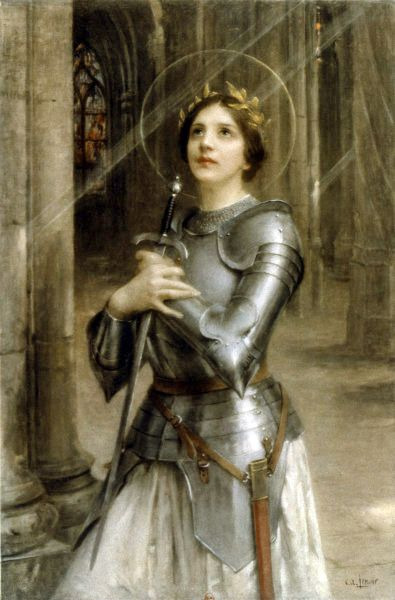
Judge me, O God, and distinguish my cause from the nation that is not holy; deliver me from the unjust and deceitful man.
For Thou, O God, art my strength: why hast Thou cast me off, and why do I go sorrowful whilst the enemy afflicteth me?
Send forth Thy light and Thy truth; they have conducted me and brought me unto Thy holy hill, and into Thy tabernacles.
And I will go unto the altar of God; to God Who giveth joy to my youth.
To Thee, O God. my God I will still give praise upon the harp; why art thou sad, O my soul, and why dost thou disquiet me?
Hope in God, for I will still give praise to Him; the salvation of my countenance, and my God.
Glory be to the Father, and to the Son, and to the Holy Ghost.
As it was in the beginning, is now, and ever shall be, world without end. amen.
- Psalm 42: Judica Me
#the judica me#absolute senseless tragedy that this was removed from the new mass#the art work is joan of arc#latin missal#missale romanum#psalm 42#Bible Quotes#prayers#latin mass
78 notes
·
View notes
Text
Battle of al-Buqaia 1163 A.D.

(Battle of al-Buqaia, miniature by Jean Colombe from Sébastien Mamerot's book "Passages d'outremer")
In the Battle of al-Buqaia in 1163, the Crusaders and their allies inflicted a rare defeat on Nur ad-Din Zangi, the Emir of Aleppo and Damascus. King Amalric I led the army of the Kingdom of Jerusalem, together with contingents from the northern Latin states, a substantial body of pilgrims who had just arrived from France, and a force brought by the Byzantine governor of Cilicia. For the Christian forces, this victory only gave a brief respite from the sustained Muslim offensive.

(Emir of Aleppo, anon French illumination)
Nur ad-Din proved to be one of the most dangerous enemies the Frankish kingdom had ever faced. Starting out as Emir of Aleppo, he steadily increased his territory at the expense of his Muslim and Latin neighbors, until he gained the great city of Damascus in 1154. He seriously defeated the Crusaders at the Battle of Lake Huleh in 1157, but fell very ill immediately afterward. This event allowed the Franks a chance to recover and, with the help of Thierry of Alsace and an army of pilgrims, to capture Harim castle later in the year. However, an attack on Shaizar failed when Reynald of Châtillon, the Prince of Antioch, quarreled with the other Franks. Consequently, Shaizar soon became the property of Nur ad-Din. In 1158, Thierry and King Baldwin III beat Nur ad-Din at Butaiha, northeast of Tiberias. The year 1160 saw the capture of Reynald, who spent the next 16 years in Nur ad-Din's dungeons. In December 1161, the Byzantine Emperor Manuel I Comnenus married Maria of Antioch and this event gave Antioch a strong protector in the emperor.

(Knight of the Cross attacking Saracens at the battle of al buqaia, late 12th c. mural painting, chapel of Cressac, Charente, France.)
Both Amalric and Nur ad-Din soon became aware of the weakness of Fatimid Egypt, whose government had fallen into a state of decay. After the assassination of Caliph al-Zafir and a series of palace coups, Shawar seized power in 1162, was soon deposed, and appealed to Nur ad-Din for help. Neither the Latin king nor the Muslim emir could afford to let the other capture the rich prize of Egypt. Accordingly, Nur ad-Din sent his lieutenant Shirkuh with an army to support the Egyptian vizier.
While Shirkuh campaigned in Egypt, Nur ad-Din mounted an offensive in Lebanon. Following Latin policy, King Amalric took an army to support his northern vassals, Bohemund III of Antioch and Raymond III of Tripoli. Fortuitously, a large group of French pilgrims led by Hugh VIII of Lusignan and Geoffrey Martel, the brother of William IV of Angoulême, joined the king of Jerusalem. In addition, Konstantinos Kalamanos, the governor of Cilicia brought his Greek warriors to assist the Crusaders. Nur ad-Din was no match for such a formidable combination of enemies and his army suffered a defeat near al-Buqaia (located between Krak des Chevaliers and Beqaa Valley, in modern-day Akkar District, Lebanon). Both Muslims and Franks were impressed by the fighting qualities of the Byzantine soldiers. The negative result of al-Buqaia only made Nur ad-Din more keen for revenge.
18 notes
·
View notes
Text
The 12th c. Templar Chapel of Cressac Saint-Genis

South of Angoulême, in France, lies the small chapel of Cressac Saint-Genis built in the 12th century by the Order of the Temple, more commonly know in modern day as the Knights Templar.
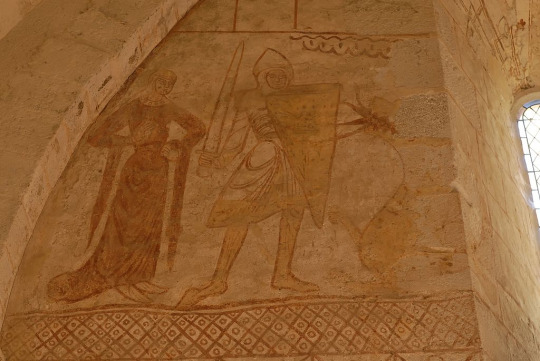
On the north wall of the chapel, are still visible two "friezes" about one meter high each, one above the other, which tell of the events following the second crusade (1147).
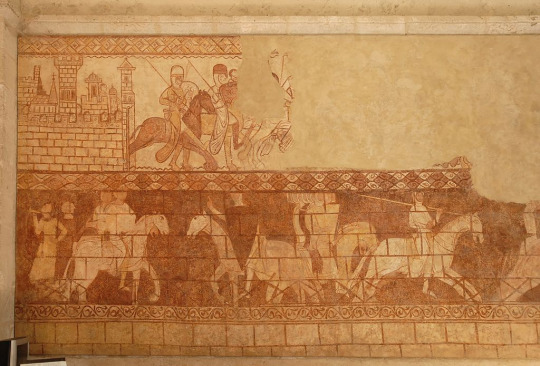
The upper register of the north wall recounts the victory won in 1163 by the Crusaders at al-Buqaia, at the foot of the famous fortress called Krak des Chevaliers. The lower register, a little later, represents an exchange of prisoners on the occasion of a truce.

This beautiful little chapel that has survived religious wars, a revolution, and two world wars, is one of but few existing intact examples of Templar architecture and artwork with very rare depictions of the knights themselves among others in the vibrant frescos.
58 notes
·
View notes
Text
King Louis XVI’s Consecration To The Sacred Heart
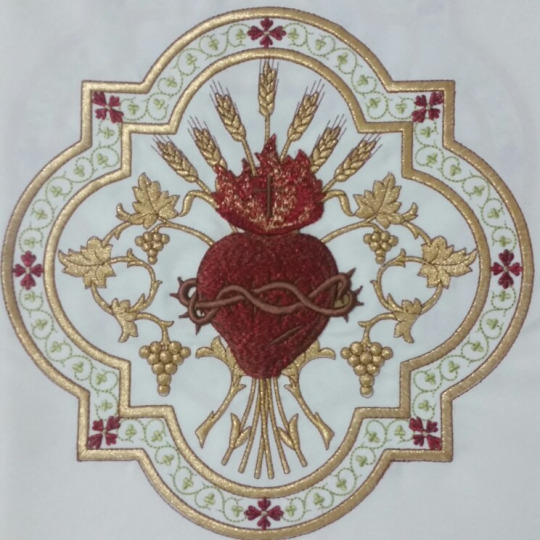
“Well dost Thou see, O my God, the great sadness that oppresses my heart, the grief that wounds it and the depth of the abyss into which I have been cast. I am assailed by countless evils from all sides. To the oppression of my soul, the horrible tragedies that have befallen me and my family add up to those that cover the whole extension of the realm. The clamoring of all the misfortunate and the moans of our oppressed religion reaches my ears, and an inner voice suggests to me that perhaps Thy justice holds me accountable for all these calamities for not having restrained, during the days of my power, their main causes, which are the people’s licentiousness and the spirit of irreligion, and for supplied heresy, now triumphant, its weapons by favoring it by laws that gave it redoubled strength and enough boldness to dare anything.
O Jesus-Christ! Divine Redeemer of all our iniquities, today I come to find relief for my soul in Thy Adorable Heart. I call to my aid the tender Heart of Mary, my august protectress and Mother, and the assistance of Saint Louis, my advocate and the most illustrious of my ancestors. Open Thyself, adorable Heart, through the most pure hands of my powerful intercessors, receive benignantly the vows of which confidence inspires me and that I offer Thee as the frank expression of my sentiments. If, as a consequence of Divine goodness, I were to recover my liberty, my crown and royal power, I solemnly promise:
1. To revoke at once all the laws that will be indicated to me by the Pope, or a Council, or by four of the more learned and virtuous bishops of my realm, as contrary to the purity and the integrity of the Faith, and contrary to the discipline and the special jurisdiction of the Holy, Roman, Catholic, and Apostolic Church; and especially to revoke the Civil Constitution of the Clergy.
2. To take, within a year, all the necessary measures to establish, with the approval of the Pope and the episcopate of my realm, and in accordance with canonical standards, a solemn feast in honor of the Sacred Heart of Jesus to be celebrated forevermore throughout all France on the first Friday immediately after the eight days following the Feast of Corpus Christi and to be always followed by a general procession. This feast will be celebrated in reparation for the outrages and desecrations perpetrated in our holy temples by schismatics, heretics and the bad Christians in these times of so great turmoil..
3. To go in person on a Sunday or a holy day within three months of the day of my deliverance to the Church of Notre Dame of Paris, or to any other principal church in the place where I will be at that time, to pronounce a solemn act of consecration of my person, my family and my realm to the Sacred Heart of Jesus next to the main altar after the Offertory of the Mass and through the hands of the priest, promising to give to all my vassals an example of the worship and the devotion due that adorable Heart.
4. To erect and adorn within a year of my release and at my own expense, in the church that I will choose, a chapel or an altar to be dedicated to the Sacred Heart, which will stand as a lasting monument of my recognition and limitless confidence in the infinite merits and inexhaustible treasures of grace that this Divine Heart contains.
5. Finally, to renew every year, wherever I might be on the Feast of the Sacred Heart, the act of consecration stated in the third point and to participate in the general procession that will take place right after that day’s Mass.
Now I cannot pronounce this pact except in secret, but I would sign it with my own blood if necessary; and the most beautiful day of my life will be when I will be able to proclaim it aloud in the Temple.
O Adorable Heart of my Savior, may I neglect my right hand and my own being if I were to ignore Thy benefits these my promises, if I were to cease to love Thee and place all my trust and comfort in Thee! Amen.”
Louis XVI, King of France
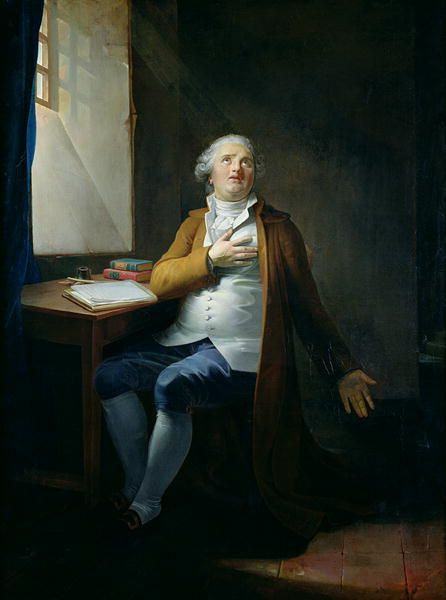
Pe. Émile Bougaud, Vicar General of Orleans. Livraria Internacional, Porto-Braga, 1879. (pp. 388-391). Published in Tradition, Family and Property Magazine May-June 1993 pp. 17-18.
91 notes
·
View notes
Text
John 6:51-54, Literal or Symbolic?
51 I am the living bread that came down from heaven. Whoever eats ( φάγῃ ) this bread will live forever; and the bread that I will give is my flesh, for the life of the world.”
52 Then the Jews started to argue among themselves, saying, “How can this man give us his flesh to eat ( φαγεῖν )?” 53 Jesus said to them, “Amen, amen, I say to you, unless you eat ( φάγητε ) the flesh of the Son of Man and drink his blood, you do not have life within you. 54 Whoever feeds ( τρώγων ) upon my flesh and drinks my blood has eternal life, and I will raise him up on the last day.
The original Greek words used in verses 51-53 are φάγῃ / φάγητε / φαγεῖν, they are forms of the Greek verb phago, meaning “eating.”
However, after the Jews begin to express incredulity at the idea of eating Christ’s flesh, the language begins to intensify. In verse 54, John begins to use τρώγων, trogo instead of phago. Trogo is a decidedly more graphic term, meaning “to chew on” or to “gnaw on”—as when an animal is ripping apart its prey.
Why does John use such strong and deliberate language if he isn’t attempting to emphasize the literal nature of Christ’s words? Especially as Jesus is clearly responding emphatically to the wonder and doubt of the Jews.
38 notes
·
View notes
Text
Therefore, anyone who eats the bread and drinks the cup of the Lord in an unworthy manner is guilty of an offense against the body and blood of the Lord. Everyone should examine himself about eating the bread and drinking from the cup. For a person who eats and drinks without discerning the body of the Lord is eating and drinking judgment on himself.
- 1 Corinthians 11: 27-29
17 notes
·
View notes
Text
Medieval Latin Hymn Lauda Sion

"Lauda Sion" is a sequence prescribed for the Roman Catholic Mass for the feast of Corpus Christi. It was written by St. Thomas Aquinas around 1264, at the request of Pope Urban IV for the new Mass of this feast, along with Pange lingua, Sacris solemniis, and Verbum supernum prodiens, which are used in the Divine Office
Sion, lift up thy voice and sing praise thy Savior and thy King, Praise with hymns thy shepherd true.
All thou canst, do thou endeavour yet thy praise can equal never Such as merits thy great King.
See today before us laid the living and life-giving Bread, theme for praise and joy profound.
The same which at the sacred board was, by our incarnate Lord giv'n to His Apostles round.
Let the praise be loud and high sweet and tranquil be the joy felt today in every breast.
On this festival divine which records the origin of the glorious Eucharist.
On this table of the King our new Paschal offering brings to end the olden rite.
Here, for empty shadows fled is reality instead here, instead of darkness, light.
His own act, at supper seated Christ ordain'd to be repeated in His memory divine;
Wherefore now, with adoration we, the host of our salvation consecrate from bread and wine.
Hear, what holy Church maintaineth that the bread its substance changeth into Flesh, the wine to Blood.
Doth it pass thy comprehending? Faith, the law of sight transcending leaps to things not understood.
Here beneath these signs are hidden priceless things, to sense forbidden signs, not things, are all we see.
Flesh from bread, and Blood from wine yet is Christ in either sign all entire, confessed to be.
They, who of Him here partake sever not, nor rend, nor break but, entire, their Lord receive.
Whether one or thousands eat all receive the self-same meat nor the less for others leave.
Both the wicked and the good eat of this celestial Food but with ends how opposite!
Here tis life and there tis death the same, yet issuing to each in a difference infinite.
Nor a single doubt retain when they break the Host in twain but that in each part remains what was in the whole before.
Since the simple sign alone suffers change in state or form the signified remaining one and the same for evermore.
Behold the Bread of Angels for us pilgrims food, and token of the promise by Christ spoken children's meat, to dogs denied.
Shewn in Isaac's dedication in the manna's preparation in the Paschal immolation in old types pre-signified.
Jesu, shepherd of the sheep Thou thy flock in safety keep living bread, thy life supply strengthen us, or else we die fill us with celestial grace.
Thou, who feedest us below source of all we have or know grant that with Thy Saints above sitting at the feast of love we may see Thee face to face amen. Alleluia.
The Gregorian melody of the Lauda Sion is borrowed from the eleventh-century sequence Laetabundi iubilemus attributed to Adam of Saint Victor. The hymn tells of the institution of the Eucharist and clearly expresses the belief of the Roman Catholic Church in transubstantiation, that is, that the bread and wine truly become the Body and Blood of Christ when consecrated by a validly-ordained priest or bishop during the Mass. Lauda Sion is one of only four medieval sequences which were preserved in the Roman Missal published in 1570 following the Council of Trent (1545–1563).
15 notes
·
View notes
Video
youtube
La Complainte des Templiers
11 notes
·
View notes
Text
The Knights Templar in Battle - Bernard of Clairvaux
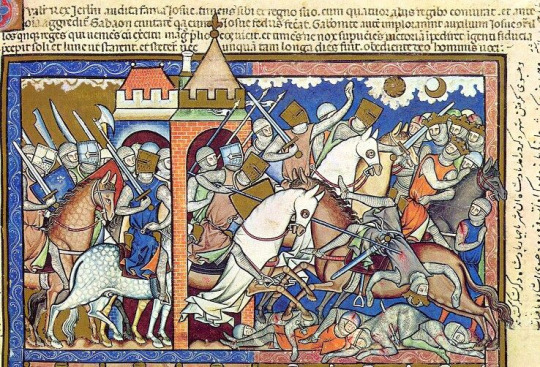
(Image: from the Morgan bible c. 13th century)
When the battle is at hand, they arm themselves internally with faith and externally with steel rather than decorate themselves with gold, since their business is to strike fear in the enemy rather than to incite his cupidity. They seek out horses which are strong and swift, rather than those which are brilliant and well-plumed, they set their minds on fighting to win rather than on parading for show. They think not of glory and seek to be formidable rather than flamboyant. At the same time, they are not quarrelsome, rash, or unduly hasty, but soberly, prudently and providently drawn up into orderly ranks, as we read of the fathers. Indeed, the true Israelite is a man of peace, even when he goes forth to battle.
Once he finds himself in the thick of battle, this knight sets aside his previous gentleness, as if to say, "Do I not hate those who hate you, O Lord; am I not disgusted with your enemies?" These men at once fall violently upon the foe, regarding them as so many sheep. No matter how outnumbered they are, they never regard these as fierce barbarians or as awe-inspiring hordes. Nor do they presume on their own strength, but trust in the Lord of armies to grant them the victory. They are mindful of the words of Maccabees, "It is simple enough for a multitude to be vanquished by a handful. It makes no difference to the God of heaven whether he grants deliverance by the hands of few or many; for victory in war is not dependent on a big army, and bravery is the gift of heaven." On numerous occasions they had seen one man pursue a thousand, and two put ten thousand to flight.
Thus in a wondrous and unique manner they appear gentler than lambs, yet fiercer than lions. I do not know if it would be more appropriate to refer to them as monks or as soldiers, unless perhaps it would be better to recognize them as being both. Indeed they lack neither monastic meekness nor military might. What can we say of this, except that this has been done by the Lord, and it is marvelous in our eyes. These are the picked troops of God, whom he has recruited from the ends of the earth; the valiant men of Israel chosen to guard well and faithfully that tomb which is the bed of the true Solomon, each man sword in hand, and superbly trained to war.
Liber ad milites templi de laude novae militiae (Book to the Knights of the Temple, in praise of the new knighthood) was written by Saint Bernard of Clairvaux (1090 - 1153).
15 notes
·
View notes
Text
The Medieval Order of The Temple: Death of a master knight

(Image: The death of Roland[?] I could not find the source)
When the master died, it was the marshal who took his place and made arrangements for the funeral. During the next week, all the brethren were to say two hundred Pater-nosters for the man who had just died, and one hundred poor people were to be fed at dinner and supper during the same time. The dead master’s personal belongings were to be shared among the other brethren, and the “gown” that he wore given to lepers.
Regine Pernoud - “The Templars Knights of Christ”
Messages would be sent to commanders within the order and they would gather in Jerusalem, or somewhere else in the kingdom, to elect a grand commander to lead during the masterless interim period, and he would wear the seal or “bull” of the deceased master. All the brethren of the Temple were to fast on bread and water for thee successive Fridays and should pray for the outcome of the election. The grand commander would select a number of wise and virtuous men and then from their number with the aid of his councilors, pick one man to be commander of the election. This commander was then to choose a brother “such as loves God and justice and is familiar with all languages and known to all the brethren and who loves peace and concord in the house”, then they would choose a brother knight as a companion for him.
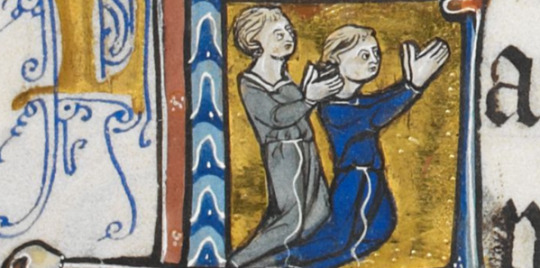
Together the two brothers would go to the chapel and spend the night there in deep prayer, and the following day after Mass they would choose two more brothers, and then the four would pray and chose two more, and so on until their number was twelve in honor of the Apostles.
When the twelve were all assembled they would appoint a brother chaplain to take the place of Christ among them. together all would pray and hear a sermon from the grand commander reminding them to fulfill their chosen duty with “God alone before their eyes, nor seek any other thing save the honor and benefit of the house and of the Holy Land”, the electors would then retire and agree on the knight who would be selected. Upon returning and requiring all to swear obedience to the master of the Temple, the commander of the election went and found the man who had be chosen and said to him, “We, in the name of the Father and of the Son and of the Holy Spirit, have elected as our master and now choose you, Brother ____ “; then to the rest he says, “Fair Lords and brothers, give thanks to God, here is our master.” and the brother chaplains are to intone Te Deum laudamus.
Source: Regine Pernoud - “The Templars Knights of Christ” (paraphrased)
14 notes
·
View notes
